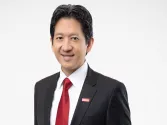5 things you must know about multi-unit franchising
By Suzanne JarzabkowskaThe solution to growing your franchise network profitably and sustainably maybe right under your nose!
The growth of multi-unit operators as an increasing component of successful franchise networks is a global phenomenon which shows no signs of diminishing.
In fact, research by the International Franchise Association’s Educational Foundation shows that well over half of all franchise units are owned by multi-unit franchisees in the US, where some franchisees may own hundreds of outlets.
And whilst the incidence here is not as great, Australian research1 notes a significant rise in the past few years.
This is of particular interest to QSR operators as not only are most of the multi-unit operators from the food sector, but the vast majority of fast food franchise systems have multiple unit franchisees.
So what are the pros and cons for franchisors, franchisees and their customers?
And more importantly how do you plan for multi-unit growth as a deliberate strategy rather than risking the pitfalls of a piecemeal ‘see how it goes’ policy?
Certainly to date, the trend has been driven by aspirational franchisees, often with little understanding of the value and the potential hazards multi-unit franchising poses to the franchisor and the brand.
A well devised multi-unit strategy can create an excellent parallel growth path to recruiting new franchisees - incentivising existing talented but possibly tired or complacent operators with new opportunities.
It is also a great way to replace chronic under-achieving franchisees without selling their poor performing locations to individuals outside the organisation, who may not see the real potential a run-down franchise can offer.
HR and Multi-unit Franchising
Central to a well-executed multi-unit strategy is the HR component. The advantages are obvious as reducing the number franchise relationships over more units allows you to manage and drive increased unit performance by better micro-management.
Generally multiple unit franchisees will develop their own systems and personnel handling a significant amount of training, operational support and compliance, purchasing, distribution, finance and accounting, staffing and local area marketing within their multiple unit network.
However, this needs to be offset against the possibility that these ‘mini corporate empires’ within the network may succumb to the very issues franchising looks to redress.
Business owners adopt the franchise model because of the proven high performance of motivated owner/operators working in their stores providing a consistent customer focus and brand experience, managing costs and staff and driving sales.
An outlet owned by a multiple unit franchisee and operated by employees can become a quasi-company outlet where the issues of management and supervision, the higher labour costs and constant motivation reduce performance, profitability and the customer experience.
Recruitment is Key
Multi-unit franchisees need distinctively different skills and experience and more importantly, a different mind-set, psychological profile and aspirations, than the single unit franchisee.
So, plan for a multi-unit operator segment in your network from the outset, articulating the criteria and creating a process that allows you to identify these potential recruits and train and support them appropriately.
However, don’t oversell the opportunity or agree to unqualified rights of first refusal – the franchisee needs prove their potential in a single unit first. And if they don’t have sufficient ability or hunger for a second unit, don’t go ahead.
Also if you don’t have sufficient resource to train, develop and provide field support, then wait until you do before granting franchisee additional units. And finally, be realistic about the geographic location you intend to grant and the number of profitable units it may contain.
Your Checklist to Granting Multiple Franchises
Before you consider the possibility of granting additional franchises to an existing operator assess the candidate’s historical performance as this will be a guide to their future behaviour.
• Compliance is paramount – with the franchisee agreement and the operations manual; buying only from approved suppliers, paying on time and selling only approved products and services and maintaining fit-out to the prevailing image. And do they comply and co-operate with marketing programs and local area marketing guidelines, paying all royalties and levies in full and on time.
• Performance is essential - have they achieved above average store evaluation scores and consistent sales growth at least to the current national sales growth average?
• Attitude is a deal breaker – you want people who are easy to do business with - team players who are prompt and courteous with management and the support office team, and who attend meetings with your support and operational team, including regional and the Annual Conference.
You also need to evaluate the financial and operational capacity of the franchisee to take on additional units.
• Financial ability is paramount – they need to prove they have sufficient financial resources to fit, open and operate the new unit, including operational capital and a contingency fund and they should provide a cash flow and P & L for current and new locations.
• A business and operational plan is essential – this will include an opening promotion strategy; unit management and key team members developed, trained and approved for current and new location/s; and a transition plan from first franchise unit.
• A risk containment policy is a deal breaker - a written plan that addresses the operational and financial risks of running second site; and an agreement between the franchisor and franchisee (to be incorporated in the existing franchise agreement) outlining the exit criteria if the additional unit fails to perform to cash flow forecast and P & L.
A carefully devised and well-executed multi-unit franchising strategy can grow the enterprise value of your franchise network utilising an existing proven resource. So take the time and the necessary commercial and legal advice as articulating the opportunity accurately, qualifying and selecting the candidates well and supporting them to succeed are the keys to optimising the multi-unit strategy.


























